
 Flash News
Flash News
Rama targets Shkodra prosecutor again: Gjeli wrote philosophical essay with innocence of illegal construction
Wanted for theft, 26-year-old arrested in Durrës
Released on bail, Salianji appears before the Probation Service
Threatened with a report by Rama, Shkodra prosecutor writes to KLP: React to political attacks
Korça/ 40-year-old man jumps from fifth floor balcony, in critical condition
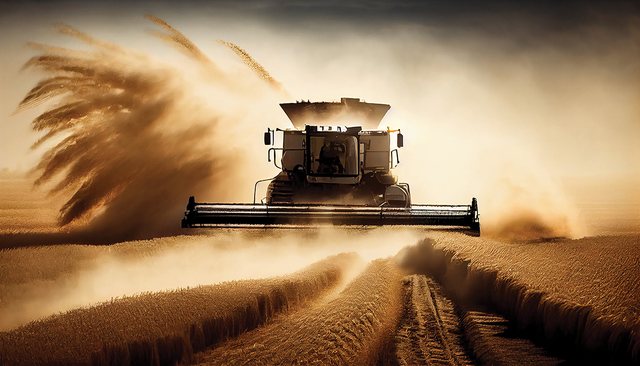
Met Salliu, one of the oldest grain growers in the village of Plug in the area of Myzeqe, since July still has unsold 500 tons of wheat produced this year. The selling price of wheat, according to him, has reached 20 ALL per kg and remains worthless.
Mr. Salliu, encouraged by the increase in the selling price of wheat, which reached 50 Lek per kg in July 2022 (after the crisis caused by Russia's attacks on Ukraine) and direct subsidies worth 30 thousand Lek per ha distributed by national agriculture scheme, cultivated 100 ha of wheat land, or 50% more than the previous season.
Subsidized wheat, produced in surplus years, is entering the second season of the selling crisis. Farmers claim that they still have a large amount of wheat and corn in stock, in warehouses or at home. To get wheat out of storage, some producers are trading it in for soil-fertilizing products priced below production cost.
Others are selling it at no profit. Grain growers across the country raised concerns about the lack of a wheat market as early as July last year, after the harvest and threshing season ended.
For 9 months, it turns out that their problem has not found a solution.
Even for this year, according to the farmers, the main problem remains the price drop, which is causing deep losses for them. In the domestic market, the selling price of wheat ranges from 20 to 25 ALL per kg or 50-60% lower than the selling price after the war in Ukraine.
Farmers claim that the price continues to remain below the cost of production. In order to deduct expenses, the production must be sold at least 40 ALL per kg.
Brikel Plasa, one of the largest growers of cereals and potatoes in the village of Pojan in Korça, claims that last year he cultivated 30 ha with this wheat, encouraged by subsidies and the favorable price of wheat. He says that only a few days ago he managed to sell 5 thousand tons of wheat that he had kept in stock for two years.
Mr. Plasa claims that he was forced to sell the wheat without a profit, since otherwise the amount produced would create flies and would not even be used for animal feed.
"We increased wheat production, driven by subsidies and price increases. We believed the calls to increase production because it is beneficial, but we came out with a loss. These days I sold 5,000 tons of the previous year's production at 25 ALL/kg to a flour and bread production plant in the Korça area.
I sold it to an acquaintance of mine, otherwise the wheat would be eaten by flies. Other farmers are exchanging wheat at a price of 20 lek per kg for soil fertilization products. With the high cost of wheat production, the selling price is not worth it.
Me këtë çmim, çdo fermer del me humbje. Për këtë arsye, të gjithë kanë pakësuar të mbjellat”.
Kultura e grurit është një nga drithërat që mbillet më gjerësisht në vend prej fermerëve. Sipas të dhënave të Ministrisë së Bujqësisë, vitin e kaluar, të nxitur nga subvencionet direkte, u shtuan 2,500 ha sipërfaqe me të mbjella me grurë. Totali i të mbjellave arriti në 57,500 ha.
Me subvencione direkte u mbështetën 4 mijë fermerë me një fond prej 5 milionë USD. Krahasuar me 2022, sipërfaqja e tokës me të mbjella u rrit rreth 5%. Sipas agronomëve, para viteve ’90, sipërfaqja e tokave të mbjella me grurë arrinte deri në 200 mijë ha.
Në raport me vitin 1998, periudha më e hershme e raportuar nga INSTAT, të mbjellat me grurë janë pakësuar me 45%.


Në Korçë, gruri po shitet si ushqim për kafshët
Sipas ekspertëve, gruri nuk është një kulturë me avantazh konkurrues pasi kushtëzohet nga ekonomia e shkallës. Gruri përdoret në masë të gjerë nga fermerët vendas për përpunim të drejtpërdrejtë të miellit për bukën, pra për vetëkonsum, ndërsa përdorimi i tij si ushqim për blegtorinë apo industrinë është dytësor.
Disa fermerë në Korçë, sipas agronomit Telha, po e shesin grurin edhe për ushqim për kafshët.
Vasfi Sherifi, përfaqësues nga AGROVAS-SHE, tha se sasia e grurit e shitur si ushqim për kafshët është e pakët, pasi kjo drithë nuk ka përdorim të gjerë në blegtori.
Më tepër përdoret elbi. Për këtë arsye, sipas tij, disa fermerë në zonën e Korçës kanë nisur të shtojnë të mbjellat me elb për përdorim në blegtori. Sipërfaqja e tokës së mbjellë me elb ishte 5,597 ha në rang vendi, sipas të dhënave të INSTAT. Krahasuar me 2021, sipërfaqet e mbjella me elb u shtuan me 10%.
Të mbjellat me grurë reduktohen 30 deri në 70% nga mungesa e shitjeve
Pas dhënies së subvencioneve direkte dhe rritjes së çmimit të grurit, në fushat e Korçës dhe Myzeqesë, sipërfaqja e parcelave me të mbjella u rrit 40 deri në 50%.
Tashmë, mungesa e tregut për shitjen e drithërave ka ndikuar te pakësimi i të mbjellave me grurë nga 30 deri në 70%, sipas vlerësimeve të fermerëve dhe agronomëve.
“Sivjet pakësova me 50% të mbjellat me grurë dhe misër dhe kam shtuar ato me patate. Për tregtimin e patates parashikojmë rritje të kërkesës në tregun vendas nga turizmi. Por edhe për këtë kulturë po hasim vështirësi në shitje, pasi ka sasi të lartë importi nga Egjipti, Serbia edhe Gjermania.
Por fermerët janë të detyruar t’i punojnë tokat, nuk mund t’i lënë djerr, pasi një pjesë e tyre janë marrë me qira.
Por si për kulturat e drithërave, duke përfshirë grurin dhe misrin, edhe për pataten, që është kultura kryesore që ne kultivojmë, problemi kryesor mbetet çmimi i ulët, i cili kërkohet nga tregtarët e shumicës”, thotë fermeri Brikel Plasa, nga fshati Pojan.
Even the barns of the farmers of the Myzeqe field continue to be full of wheat. Due to the selling price below the cost of production, even Met Salliu, the grain grower in the village of Plug, said that this year he planted 30 ha of wheat, or 70% less than the previous area.
Agronomist Nevion Telha adds that in the plain area of Korça, where cereals are mainly planted, wheat crops have been reduced by 30 to 40%. The main reason, according to him, is the selling price of wheat below the cost, affecting the increase of stock goods.
"This year, wheat crops have decreased by at least 40% in the area of the Korca field. Most farmers have stock wheat at home, unsold. The price of wheat below 40 ALL per kg is below the cost of production.
The farmer makes a loss if he sells it at this price. He can't even get back the expenses for the seed, fertilizing, tilling the land with a tractor, the payments of the harvest and threshing workers", he asserts.
Falling wheat prices are causing losses to the entire market value chain. Vasfi Sherifi, head of the AGROVAS-SHE company, but also a wheat grower who then sells it for sowing to farmers, says that of the 100 ha of wheat planted in 2022 for the previous year, he planted 50 ha less.
"All farmers have stocks of wheat, still unsold. The asking price is completely below the cost of production. For this reason, we also reduced the sowing of seeds by 50%", he underlines.
Farmers reduce services for wheat fields, a drop in production yield is expected
With less land planted to wheat, agronomists expect lower yields this year.
Vasfi Sherifi, of the company AGROVAS-SHE, which, in addition to trading seeds for planting, also offers products for fertilizing agricultural lands, has found that farmers in this period have reduced services to fields planted with wheat.
Although the production yield will be determined in June, it is predicted that the quantity this year will be decreasing.
"The month of March is the season of fertilizing the land planted with wheat, but from the farmers of the Korca area, the services to this crop this year are few. The decline has come from the demoralization of not selling wheat, but also from the lack of knowledge", he assessed.
According to INSTAT data, the yield of wheat production for 2022 reached 43 kv per ha. Compared to 2021, the production yield has increased by about 5%.
For agronomists, the highest production yield for wheat in the amount of 70 kv per ha was achieved in the communist period. The maximum achieved by some farmers, according to them, in the current years is 50 to 60 kv per ha./ Monitor
Latest news


Amid the Alps in Theth, the law punishes even those who try to respect it
2025-07-11 10:14:16
Wanted for theft, 26-year-old arrested in Durrës
2025-07-11 10:03:29
After the dismissals, Rama gathers the mayors in Durrës
2025-07-11 09:42:29
Released on bail, Salianji appears before the Probation Service
2025-07-11 09:34:28

Haxhi Qamil Rama and the directors of the Municipalities!
2025-07-11 09:21:35
30 years since the Srebrenica massacre in Bosnia and Herzegovina
2025-07-11 09:10:52

From rhetoric to brandy, POLITICO: 9 things Nigel Farage can do in Albania
2025-07-11 08:53:35
Trump announces 35% tariffs on Canadian goods
2025-07-11 08:39:29
Foreign exchange, how much foreign currencies are sold and bought today
2025-07-11 08:24:25

Horoscope, what do the stars have in store for you today?
2025-07-11 07:59:39
Sun and high temperatures, weather forecast
2025-07-11 07:41:09
Morning Post/ In 2 lines: What mattered yesterday in Albania
2025-07-11 07:20:14
Zhupa: In Theth, some Austrian strategic investors want the empty area
2025-07-10 22:57:08
Malltezi: SPAK admits, we are in a process that began with Balla's false report
2025-07-10 22:34:16

Si të çliroheni nga bllokimet emocionale me anë të ushtrimeve
2025-07-10 21:57:24

Lala: Veliaj wanted to return as mayor
2025-07-10 21:40:46

VIDEO/ Brawl in Bolivian parliament, deputies physically clash
2025-07-10 21:20:30

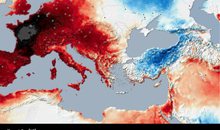
Albania experienced one of the longest heat waves of the last decade
2025-07-10 21:01:09

The Government approves new procedures for declaring residence in e-Albania
2025-07-10 20:39:32

Koka: Northerners will not forget Edi Rama's racist operation in Theth
2025-07-10 20:18:24
The 3 zodiac signs that will be most affected by the 'Full Moon' of July 10
2025-07-10 20:04:49
New director of the National Center of Cinematography appointed
2025-07-10 19:51:12
Korça/ 40-year-old man jumps from fifth floor balcony, in critical condition
2025-07-10 19:40:19
'Tired Woman'/ The Syndrome That Affects Thousands of Women Every Day
2025-07-10 19:34:02
Jane Birkin's original Hermès bag sells for $10 million
2025-07-10 19:26:22

Britain-Ukraine agreement signed for 5,000 Thales missiles
2025-07-10 19:00:25
Fire in Zvërnec, flames endanger two hotels
2025-07-10 18:57:19
Croatia restores compulsory military service
2025-07-10 18:39:01
Spahia: The great truth of the strong accusation of the residents of Theth
2025-07-10 18:35:07


The Supreme Court left him in prison, Meta addresses the 'Constitution'
2025-07-10 17:57:21
New punishment with 'new' regulations
2025-07-10 17:54:46
EU translator fired over fears for Zelenskyy's safety
2025-07-10 17:45:37
'You are a policeman, but not God, take my soul', protest for Agon Zejnullahu
2025-07-10 17:41:21


Video/ Rama repeats the scenario, kneels before Meloni again
2025-07-10 16:56:31
He set fire to a plot of olive trees, 50-year-old man arrested in Shijak
2025-07-10 16:46:19

Rubio: US and Russia have exchanged new ideas for Ukraine peace talks
2025-07-10 16:36:20
Death of 27-year-old, Lipjan Police Commander Resigns
2025-07-10 16:21:28
Video/ An apartment burns in Tirana near the New Bazaar
2025-07-10 16:09:36
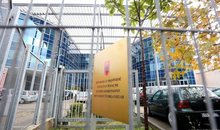

Jensila lights up the internet with her birthday greetings to Ledri
2025-07-10 15:42:08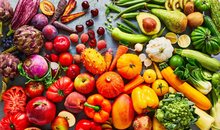
They're full of pesticides! List of 12 products we need to be careful of
2025-07-10 15:31:04

Worker falls from scaffolding in Shëngjin, urgently sent to Trauma
2025-07-10 15:11:03
Malltezi: Within one day they seized my accounts, properties and shares
2025-07-10 15:01:23
EU: Israel has agreed to more aid to Gaza
2025-07-10 14:55:19


Murder of Reni Dobra, 23-year-old's vehicle pulled from the water
2025-07-10 14:29:23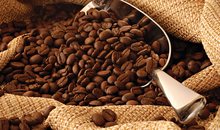
Trump's tariffs on Brazil raise coffee prices
2025-07-10 14:16:07
Ursula von der Leyen survives no-confidence vote
2025-07-10 14:04:27


Fire in Lezha, flames near electrical substation
2025-07-10 13:32:24
Residents clash with police in Theth, a woman faints
2025-07-10 13:24:38
"Rama and Xanun"
2025-07-10 13:15:46

Zodiac signs most likely to get divorced in July 2025
2025-07-10 12:45:51
A scapegoat for an illegitimate Republic
2025-07-10 12:35:02
"He has devastated his own nation"/ Berisha: Rama imprisons his opponents!
2025-07-10 12:26:54

Albanian man injured with knife in Italy
2025-07-10 12:08:55






23-year-old in Mat drowned with rope, 4 suspects are being held
2025-07-10 10:58:53

After the dismissals, the new director of the Shkodra Police is appointed
2025-07-10 10:30:10
BIRN: Rama's action for public spaces, a repeated spectacle
2025-07-10 10:29:11
Action in Theth, Shkodra Police leaders dismissed
2025-07-10 10:16:28
Fatal accident on the Tirana-Durres highway
2025-07-10 10:01:58
The incinerator does not exist, but the government continues to increase funds
2025-07-10 09:51:45
Albania is aging at a rapid pace! 30% of the population is over 60 years old
2025-07-10 09:46:23
End of an era, Modric says 'goodbye' to Real Madrid
2025-07-10 09:36:09
Mount Dukat has been on fire for 6 days, residents request air intervention
2025-07-10 09:27:24

"Poverty on the rise"/ DW: Many people in Germany are not getting paid
2025-07-10 09:08:06
Horoscope, what do the stars have in store for you today?
2025-07-10 08:51:59

